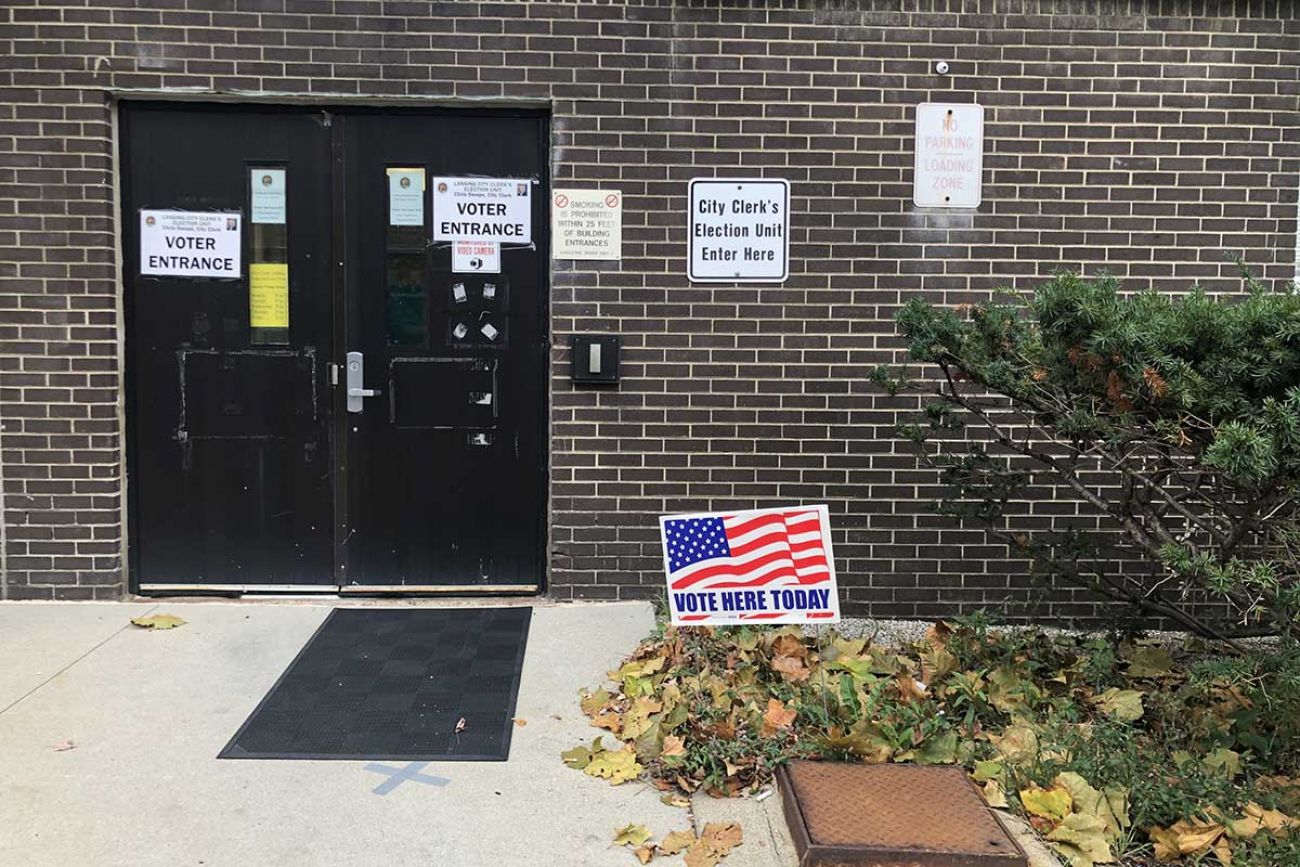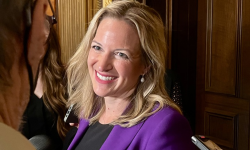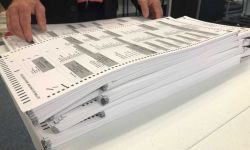In Michigan, some communities are banding together to count election results


During Michigan’s primary elections in August, 151 poll workers in Oakland County set aside time to count more than 50,000 absentee ballots from 16 communities.
They finished five hours ahead of their goal, with enough time left over to watch “Murder, She Wrote” and “Little House on the Prairie,” said Oakland County Clerk Lisa Brown, who organized the workers.
“The counting board was efficient, accurate, secure and a huge help to many of our city and township clerks,” she said.
Brown said this record timing was a result of an assembly-line ballot counting strategy developed by Oakland County’s election supervisor that took advantage of a new law that allows clerks to contract with one another to form absentee ballot county counting boards.
It’s one of two initiatives that might help local clerks track, process and count a flood of more than 2.6 million absentee ballots this year.
Michigan has one of the most decentralized election systems in the country, as the largest of eight states that administers elections at the municipal level, placing significant responsibilities on clerks who sometimes lack access to adequate machinery, space and staff.
Ahead of Nov. 3, a project designed by University of Michigan School of Information graduate students may also alleviate some pressure. In a partnership with the Michigan Department of State, graduate students piloted an email communication system that notifies voters in four cities and townships in Oakland, Bay and Wayne counties when their ballot has been sent and received, saving clerks hours of time on the phone.
On Election Day, Oakland, Ingham and Calhoun counties are among those taking advantage of the new county absent voter counting board legislation that will take record numbers of absentee ballots off of local clerks’ hands.
Joseph Rozell, the Oakland County elections director, said voters can expect timely results reporting for some 125,000 absentee ballots because of the new counting system.
County clerks from Illinois, Texas and Idaho have inquired about his approach to counting, Rozell said.
“August exceeded my expectations,” he said. “It’s a lot of work on the front end, but it really does produce results on Election Day.”
Combating misinformation
Jordan Smellie, Ferndale’s election specialist, said he spent more than 100 hours in June and July answering phone calls and emails from thousands of voters inquiring about the status of their ballots for the August primary.
The notification project developed by graduate students from the University of Michigan’s School of Information has saved Smellie an immense amount of time during the most difficult election season he has ever faced.
This summer, the Michigan Secretary of State’s office approached the Citizen Interaction Design program to collaborate with graduate students on a project to help combat misinformation this election season, said Scott Tenbrink, a lecturer for the University of Michigan School of Information and manager of the program.
After conversations with many local election administrators across the state, the students expanded and adapted the city of Ann Arbor’s existing ballot status email notification system to four smaller communities: Oxford Township, Ferndale, Bay City and Northville Township.
Lauren Trimble, one of three students who participated in the project, said clerks update voters’ ballot status in the Qualified Voter File and create daily reports with this information. The system finds voters’ emails in the clerks’ reports and sends them a message notifying them that their ballot has been sent out or received.
While the project has eased his workload, Smellie said the most important outcome is increased voter transparency.
“This November election is drowning in the darkest depths of the disinformation that pervades life these days, but our voters have this clear beacon of information that cuts through it all, assuring them that their [ballot] has been sent or received,” he wrote to Bridge Michigan in an email.
The best thing going for small communities
County clerks are also trying to provide election officials with access to additional resources they say they desperately need this year.
During the August primary, Ingham County Clerk Barb Byrum said Meridian Township had only 11 poll workers to process thousands of absentee ballots.
Over the past eight years, Byrum said the township has consistently been the last to deliver voting results to the county.
Now, 50 election inspectors hired by the Ingham County absentee counting board will count the township’s ballots at the local sheriff’s office.
“It will be adequately staffed, and I would argue, a better trained and managed process,” Byrum said.
Other local clerks didn’t have enough space. Candee Allen, Brandon Township clerk, a community of 15,000 in Oakland County, said she doesn’t have access to a facility where dozens of poll workers could spread out to count absentee ballots safely in the middle of a pandemic.
“The county board is the best thing going for small communities that can’t social distance,” she said.
In Oakland County, Rozell said he spent a month and a half before the August primaries conducting time studies with office staff to develop an assembly-line absentee ballot counting strategy. He will use the same strategy on a larger scale for the presidential election.
On Nov. 3, 330 county poll workers will use 20 high-speed tabulators to count an estimated 125,000 ballots from 16 municipalities, including two of the county’s largest cities, Pontiac and Southfield.
The workers will tabulate results in three locations wearing masks and separated by Plexiglass shield dividers.
Rozell said the key to the counting board’s success is simple: inspectors concentrate on one specific task that they’ve been prepped on prior to Election Day. There are letter openers, processors, scanners, adjudicators and duplicators. They concentrate on one duty throughout the entire 13-hour shift.
City and township clerks say they’re enthusiastic about participation, too. For many of the 16 community clerks, the initiative has provided a necessary alternative during an unprecedented election season, they say.
“With a huge increase in absentee ballots, and with [the city] having no high speed tabulators to count them, the county board is a great opportunity for us this year,” said Oak Park Clerk Ed Norris. “It will be such a help to us in November.”
This article is made possible through Votebeat, a nonpartisan reporting project covering local election integrity and voting access. This article is available for reprint under the terms of Votebeat’s republishing policy.
See what new members are saying about why they donated to Bridge Michigan:
- “In order for this information to be accurate and unbiased it must be underwritten by its readers, not by special interests.” - Larry S.
- “Not many other media sources report on the topics Bridge does.” - Susan B.
- “Your journalism is outstanding and rare these days.” - Mark S.
If you want to ensure the future of nonpartisan, nonprofit Michigan journalism, please become a member today. You, too, will be asked why you donated and maybe we'll feature your quote next time!




